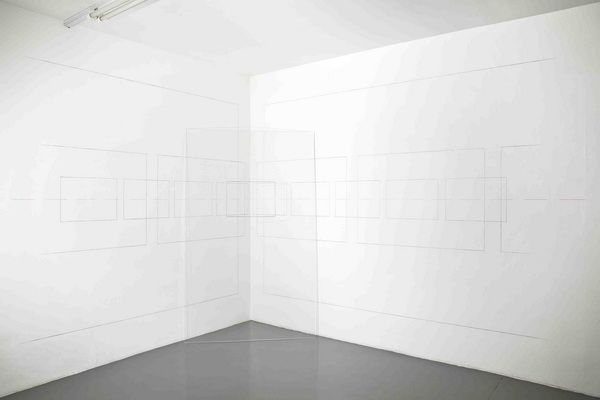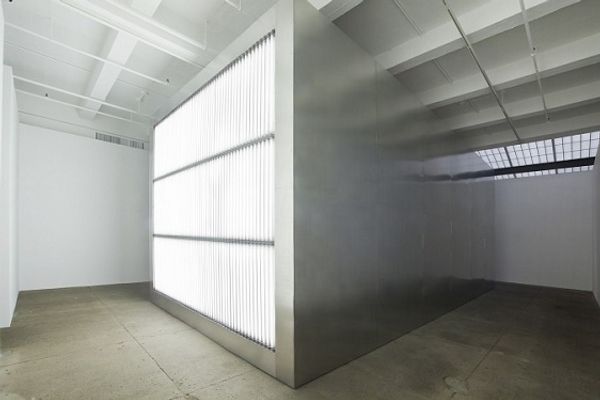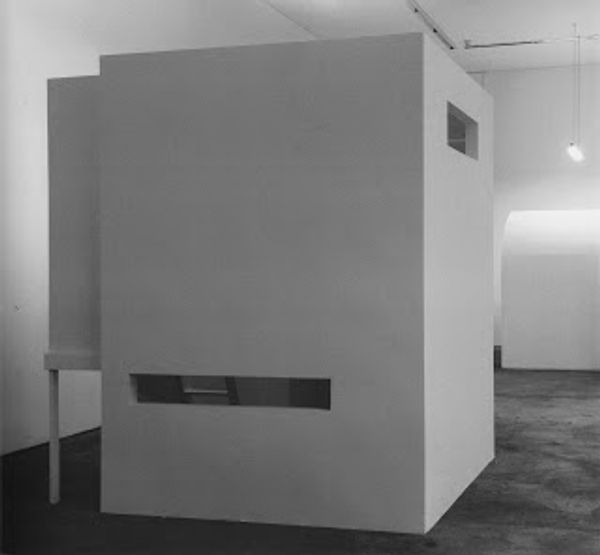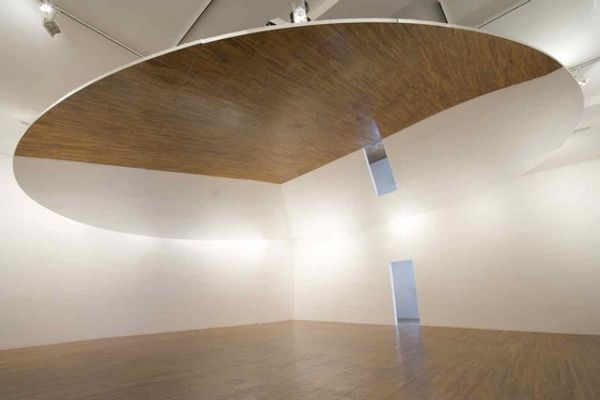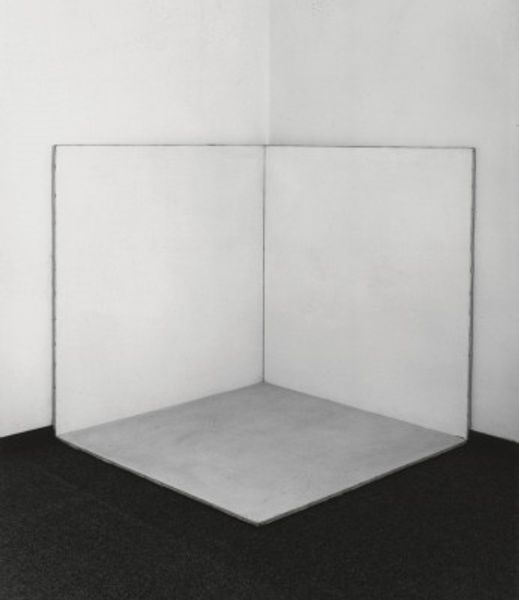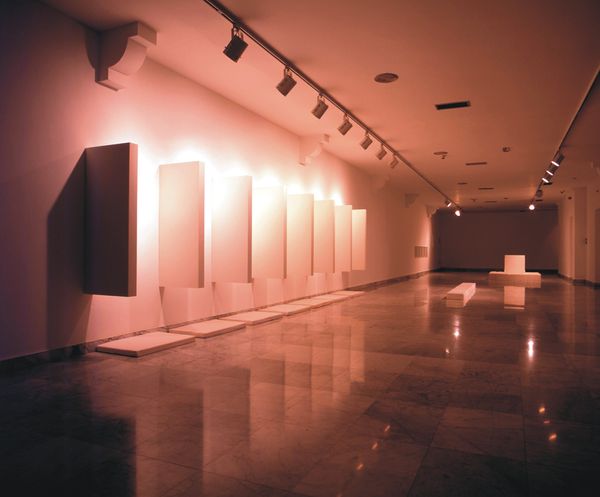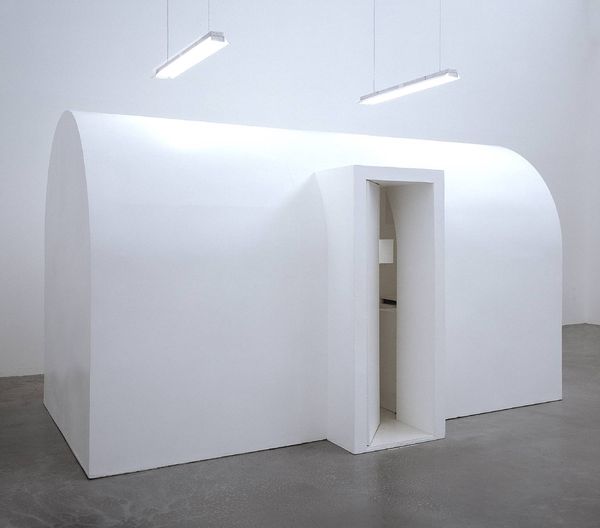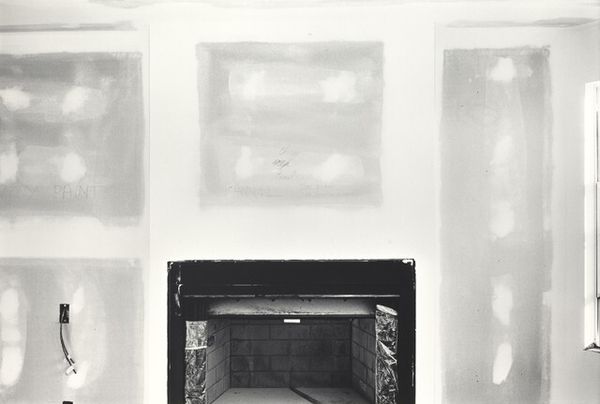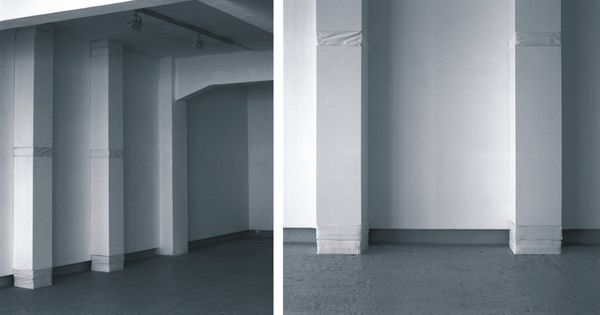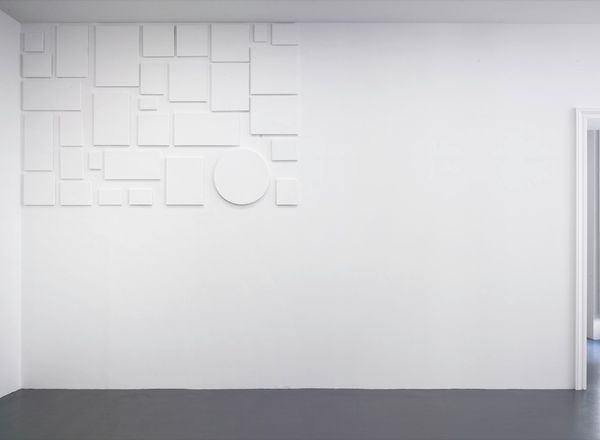
photography, installation-art
#
portrait
#
conceptual-art
#
photography
#
geometric
#
black and white
#
monochrome photography
#
installation-art
#
monochrome
#
monochrome
Copyright: Adrian Piper,Fair Use
Curator: Adrian Piper’s installation, "What It’s Like, What It Is #3," from 1991 presents a really stark image to unpack. I’m curious about your immediate impression. Editor: Cold, clinical. It's all sharp angles, bathed in this almost aggressively bright, flat light. And the black and white adds to that feeling of detachment. What are we meant to focus on here? Curator: That sense of alienation is absolutely intentional. Piper frequently uses her work to address issues of race, identity, and social exclusion. This piece, in particular, confronts viewers with the experience of being 'othered'. Editor: So, the central structure is almost like a fortress, isolating those images within the openings. I can see those two faces inside. There is this repetition with other identical and unused apertures visible in the rest of the gallery space Curator: Precisely. Those 'windows' display photographs of the artist herself and other people of color. Consider that the all-white space, this enforced geometric aesthetic…It highlights how mainstream society constructs a very specific, very exclusive image of itself. The title itself indicates it is part of a larger body of work around similar ideas. Editor: That makes me think of those 'gaze' paintings, like those of the Renaissance where the subject’s direct stare attempts to meet the viewer. But here the openings seem confrontational, demanding something specific but hidden, beyond mere looking. The repetition, with the pristine emptiness all around, gives it a kind of surreal edge. Curator: Yes, the repeated geometric forms become like a chorus echoing a sense of sterile objectivity, but also social rigidity and control. The installation asks us to consider what it means to be viewed, judged, and categorized, not just as individuals, but as members of a marginalized group. Piper creates a space for uncomfortable self-reflection, urging us to interrogate our own biases and complicity within these power structures. Editor: I see what you mean. It’s more than just representation; it is almost ritualistic, the way she places the gaze as something embedded in the overall structure, so as to remind us of some sort of hidden structure in which these dynamics operate. Thank you. It helps contextualize the work’s confrontational force and austere presentation. Curator: Absolutely, the symbolism embedded in its forms enhances its complexity.
Comments
No comments
Be the first to comment and join the conversation on the ultimate creative platform.
